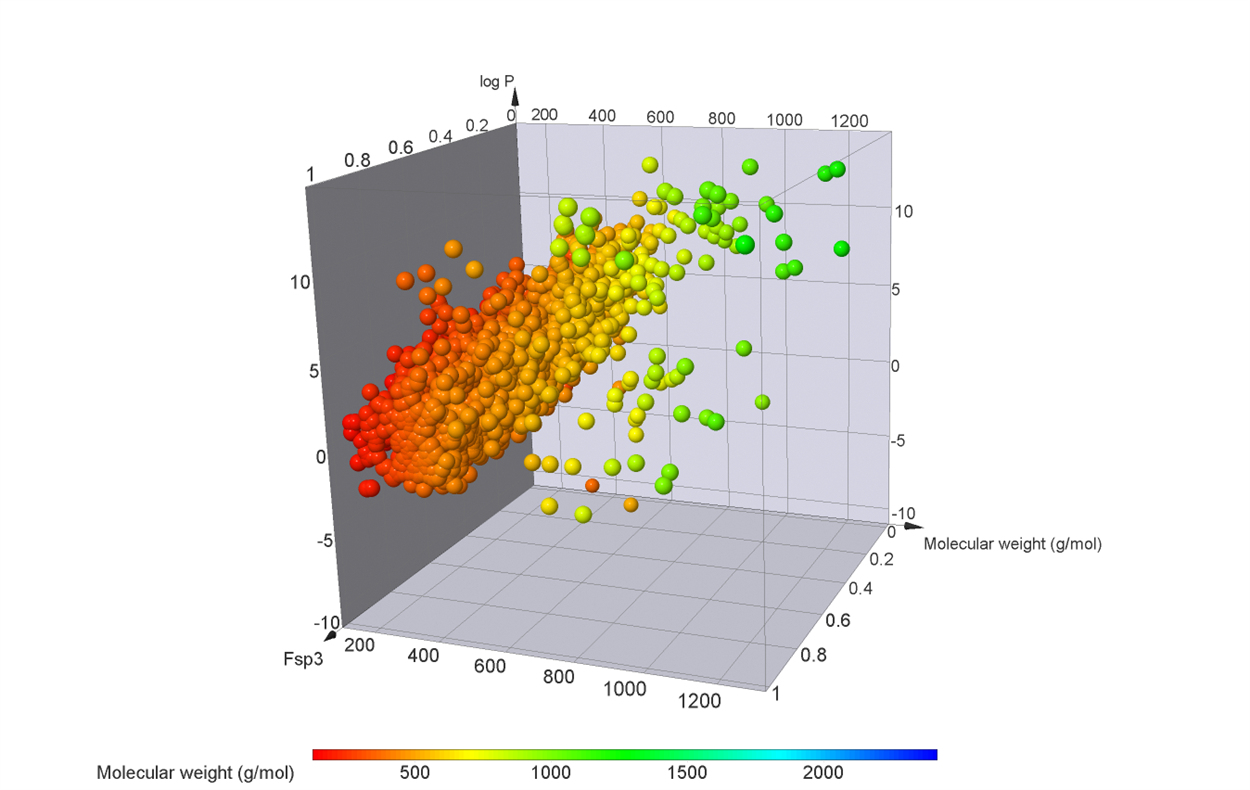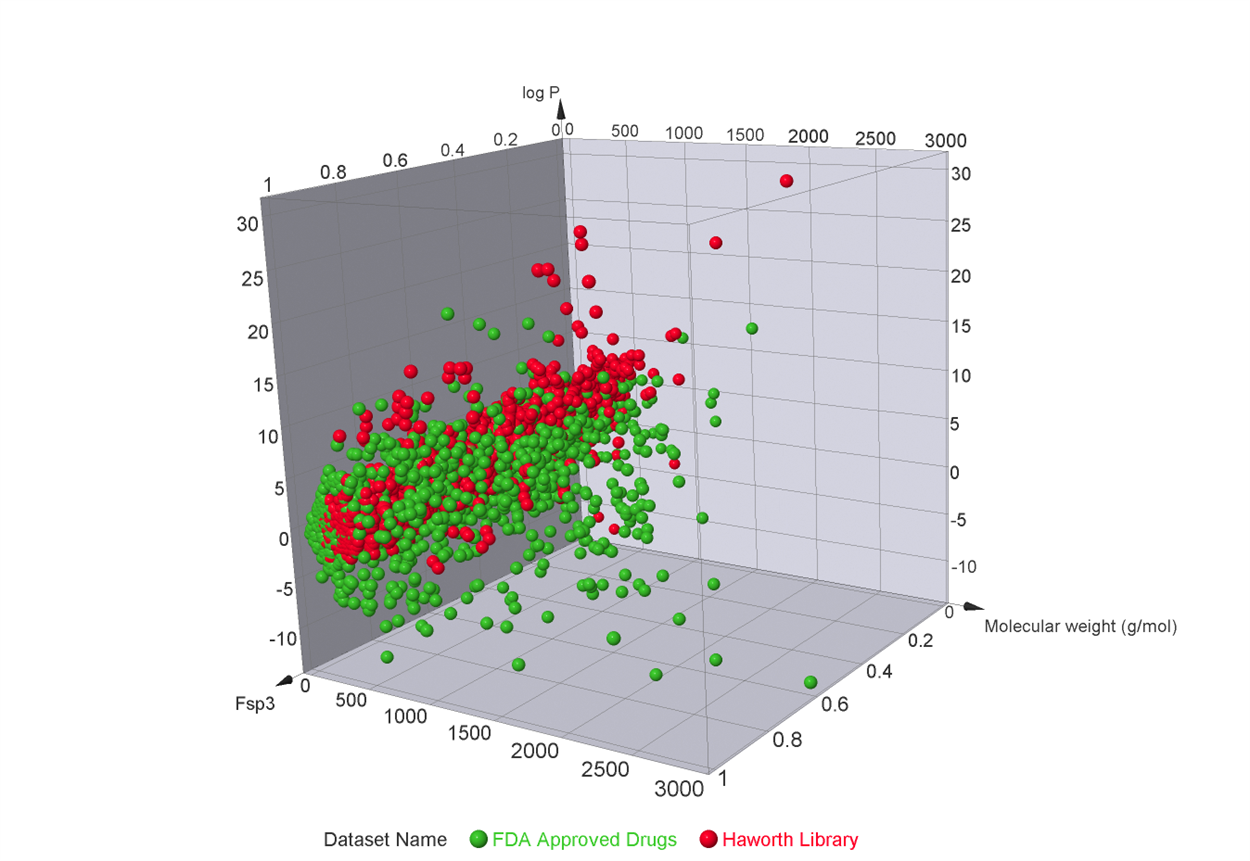The Haworth Chemically-Enabled Compound Collection was set up to enhance drug discovery programs at the University of Birmingham and beyond. We have compiled a unique and diverse collection of molecules with attractive properties which can be used by collaborators here in Birmingham, in other institutions and by drug discovery companies alike.
Collaborators can benefit from the collection in various ways. A screen in a biological assay may help validate a biological target, or identify a new molecule to develop as a drug target to ultimately improve patient’s lives. The collection is unique to Birmingham as it is compiled solely of research carried out here in our Chemistry department, by our scientists.
Primary Aims
- To enhance and support drug discovery at Birmingham with a focus on hit generation for drug discovery, agrochemical, and veterinary medicine applications
- To engage external collaborators across the life and biomedical sciences
- To deliver high-impact science and catalyse translational activity
The Collection
- Chemically-enabled: In-house knowledge and expertise available to re-synthesise or elaborate compounds of interest, offering a competitive advantage over many commercial collections
- Good starting points for drug discovery programmes: all compounds are screened for toxicophores prior to accession to the Collection.
- 70% Lipinski compliance offers high ‘drugability’ as well as operating in chemical space beyond the rule of 5
- Significant novelty – often synthesised using methodology developed at Birmingham, the Collection is distinctive compared with many other compound collections, with a high proportion of compounds exhibiting high Fsp3.
- Virtual Collection: comprises >6300 compounds, spanning decades of research at the University
- built up through thesis mining of novel and chemically interesting molecules
- all compounds have either been synthesised at Birmingham or are elaborated based on proven methodology making them synthetically feasible.
- Physical Collection: comprises >600 compounds
- enriched with drug-like molecules developed through EU-funded project, iDESIGN, whose focus is the design and synthesis of diverse libraries with favourable physiochemical properties for drug discovery
- accession to the Collection follows industry standards of quality control (average 97% purity)
Plots of molecular weight vs. LogP vs. Fsp3(a), and a Principle Component Analysis (b) of the collection using these 3 descriptors is an effective way to represent the diversity and occupation of chemical space by our collection.
a)

b) 
Comparison plots of our collection vs. commercial collections, show good overlap with known FDA approved drugs (c) and Enamine’s Hit Locator Library (d), as well as showing healthy diversity in lesser explored chemical space.
c)  d)
d)
